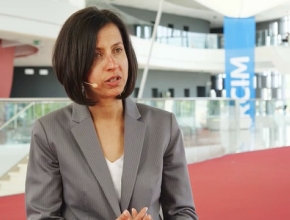What is the optimal treatment of heart failure in patients with preserved, reduced, or mid-range left ventricular ejection fraction (LVEF)? Should patients with mid-range LVEF be treated similarly to those with reduced LVEF?
Harriette Van Spall, MD: There is lots of high-quality clinical trial evidence for the use of beta-blockers, angiotensin-converting enzyme (ACE) inhibitors, mineralocorticoid receptor antagonists in heart failure with reduced ejection fraction (EF). Trials have typically used a cutoff of 35% to 40% to delineate reduced EF from preserved EF, and now we actually have this mid-range EF, which is from 40% to 50%.
There are class I indications for the use of those 3 types of medications. ACE inhibitors and beta-blockers should be titrated to their target doses. If patients remain symptomatic with heart failure and reduced EF, we then have high-quality evidence to add mineralocorticoid receptor antagonists. Patients who remain symptomatic on those 3 classes could then be considered for a switch from ACE inhibitors to angiotensin receptor neprilysin inhibitors, valsartan/sacubitril, based on the PARADIGM-HF (Prospective Comparison of ARNI With ACEI to Determine Impact on Global Mortality and Morbidity in Heart Failure) trial that recently demonstrated a 20% risk reduction in patients with heart failure and reduced EF.
The evidence is not compelling for the use of these classes of medications in preserved EF or in mid-range EF. There just has not been enough research evidence. The trials that have tested the efficacy of medications in this range of EF have not been able to demonstrate a mortality reduction. The TOPCAT (Treatment of Preserved Cardiac Function Heart Failure With an Aldosterone Antagonist) trial did show that mineralocorticoid receptor antagonists could have a role in reducing heart failure hospitalization but it did not impact all-cause mortality or all-cause hospitalization. Our guidelines suggest that in patients with heart failure and preserved EF you manage volume with diuretics and then you manage the risk factors, such as hypertensive heart disease or uncontrolled atrial fibrillation, with the use of appropriate medications. Now there is a high prevalence of ischemic heart disease in patients with heart failure and oftentimes even people with preserved EF are on ACE inhibitors and beta-blockers for that reason. In addition, beta-blockers can be used for atrial fibrillation rate control. In some patients there might be a role for mineralocorticoid receptor antagonists based on the TOPCAT trial.
The mid-range EF—it is really unclear as to what the best therapies are that would improve outcome simply because those patients have not been included in clinical trials, but we sort of generalize results from the reduced EF population and apply them to the mid-range population. But really, we need more clinical trial evidence to inform how to best manage these patients.
 English
English
 Español
Español
 українська
українська











